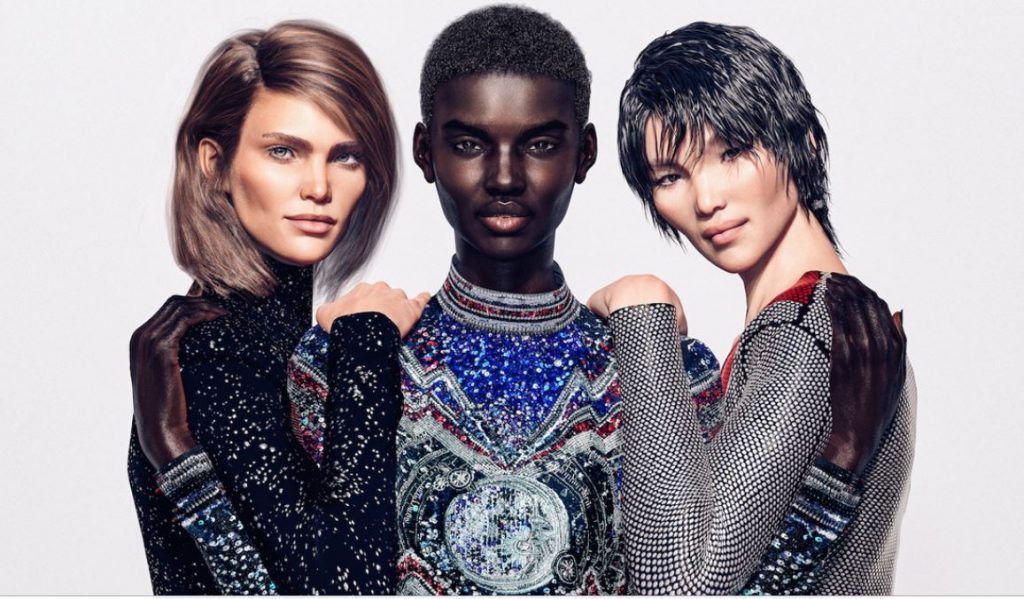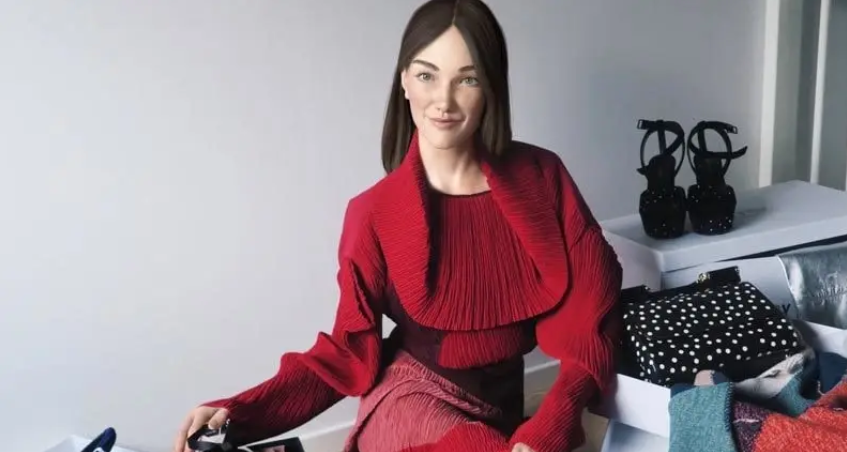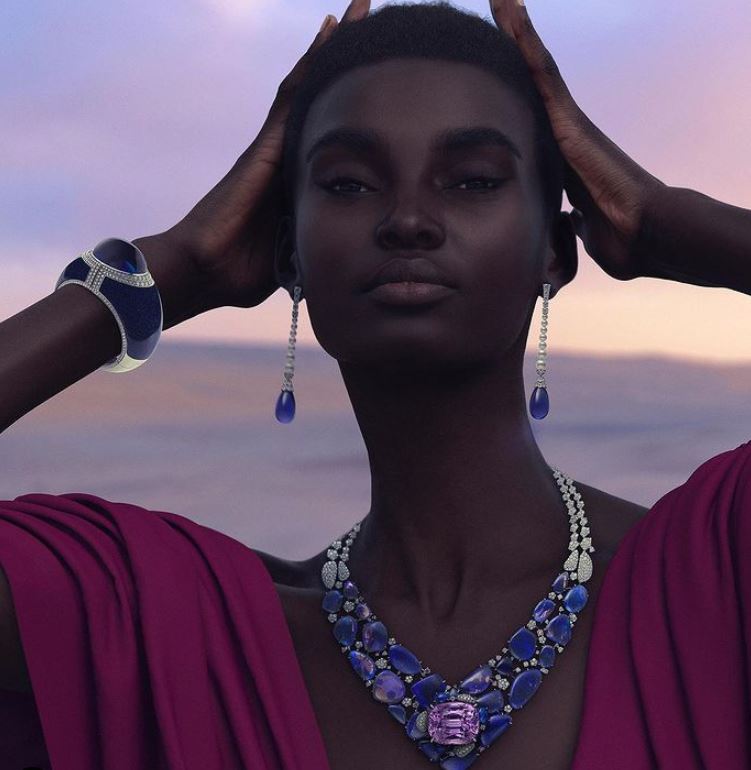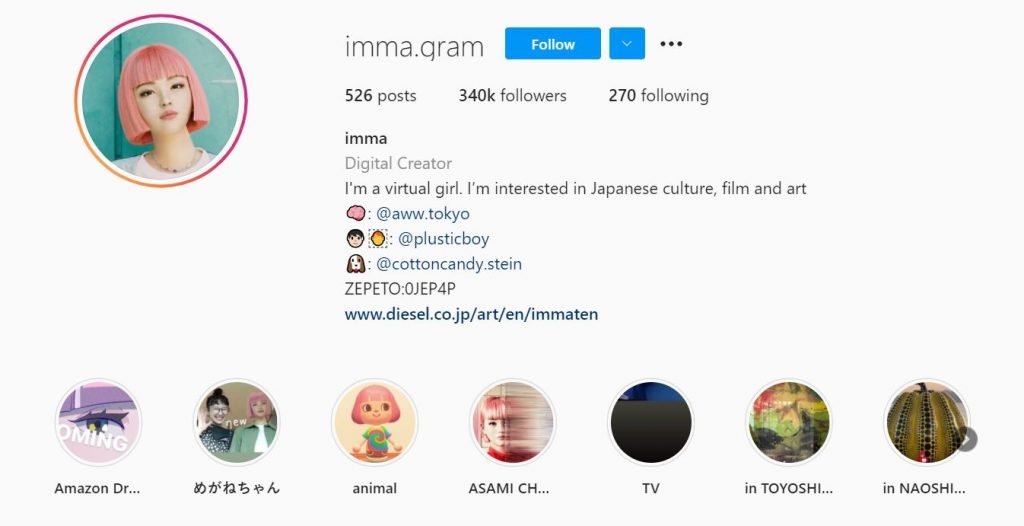In this detailed guide, we’ll unravel the meaning of a virtual influencer and how these influencers can help your business. We’ll also cover a few popular brands using virtual influencers for their marketing campaigns.
“Robots are taking over”, says so many people. But with the rise of virtual influencers, there are so many advantages for businesses like yours. As 17% of companies will devote more than half their annual budgets to influencer marketing, this marketing technique works.
But here’s the problem, how much do you need to fork out to pay every influencer? How do you find the perfect influencer? And how do you make sure that influencer doesn’t drop your brand and side with your competition?
Well, thanks to advanced AI and CGI, you can create a virtual influencer of your own.
Not sure what the heck a virtual influencer is? Let’s talk about that now.
Virtual influencers or CGI influencers are computer-generated avatars that take the form of real people. These influencers are a substitute for human influencers and are used for social media marketing purposes. Virtual influencers have realistic personalities, values, and characteristics that make them seem life-like.
You create a digital influencer by using computer graphics. Everything from the clothes these influencers wear to the environments they post pictures in does not exist in the real world. However, there are a few exceptions. For example, the virtual influencer Imma was once brought into the real world for a marketing campaign in Japan.
Opting for virtual influencers doesn’t mean that you shouldn’t use human influencers. This is merely an alternative option for businesses who want to try a unique twist to influencer marketing.
Virtual influencers give you complete control over the image they relay to your audience, and there are no physical limitations. You also don’t have to worry about controversial topics arising from your influencers or sourcing human influencers. In detail, these are the top 4 virtual influencer benefits.
Businesses want to portray the perfect image to engage and persuade their users. Through using virtual influencers, this is possible. You can curate a virtual influencer with the personality, look, and values that appeal to your audience exactly how they want it.

Real-life influencers will impose their own image, values, and beliefs on your audience. But a virtual influencer will do this in a way that you prefer. Through this AI, you can strengthen your brand image and promote your values accurately.
The lockdown has slowed down business operations and makes in-person communication near impossible. However, using virtual influencers eliminates this concern. You don’t have to worry about influencers commuting long distances to meet with your brand or putting anybody at risk of getting infected.
Leveraging virtual influencers also means that the environment the influencer interacts with is all digitalized. As a result, you don’t have to rely on real-world settings for the influencer to market your products. You can create the environment from start to finish, in a way that best compliments the virtual influencer and engages your audience.
Imagine having one of your best influencers say something completely unorthodox on social media? Your business will face overwhelming backlash from its audience, and your online reputation might take a knock. This alone can be the demise of a brand.
However, virtual influencers don’t pose the same risk. You have complete control of what these influencers say and how they say it. Virtual influencers are also able to support social changes like the LGBTQ+ community and Black Lives Matter. Notice on Lil Miquela’s Instagram profile, her Bio includes “Black Lives Matter”. This proves that you can use your virtual influencers to support global movements.

For large organizations with years of experience and a prestigious reputation, finding relevant influencers is super-easy. But for the average startup, this is a lot more difficult. How do you choose the best influencer for your brand? How do you know if that influencer will deliver your desired results? And most of all, does that influencer genuinely represent your businesses?
With virtual influencers, you don’t have to worry about any of that as you determine the influencers you use. So, no more negotiating incentives with influencers or spending hours trying to source influencers. Instead, you can rely on a virtual influencer tailored to your business.
Many world-class brands are using virtual influencers for their marketing campaigns. Not only is this tactic engaging millions around the world, but it also makes these brands stand out from their competitors.
These are the five brands that use virtual influencers.
For their worldwide #TeamGalaxy campaign, Samsung partnered up with Lil Miquela to promote their new Galaxy Z flip-phone. They did this in one video with the tagline “Do What You Can’t”. This tagline and the partnership with Lil Miquela was a match made in heaven as the very existence of this CGI influencer proves that anything is possible.
Samsung’s primary objective for this campaign was to strengthen the relationship between their brand and Gen Z and millennial users. And there was no better way to do this than involving one of the world’s most popular virtual avatars-a testament to the ever-evolving depths of technology.
Credited to this campaign, Samsung generated over 126 million organic views, 24 million engagements and increased their Instagram earnings by 12%.
The French luxury clothing line known as Balmain launched a campaign comprising 3 digital influencers. These virtual influencers included Margot and Zhi, exclusive to Balmain, and Shudu Gram, a free agent. Balmain aimed to create a new realm for the model industry, showcasing unique art forms.

While there isn’t information on the results of Balmain’s progressive brainchild, the famous fashion line did receive mixed reviews for this campaign. Some people were unhappy with this choice and believe the job could be better suited to real women. However, Balmain doesn’t regret their decision and loves how the virtual influencers portrayed the brand.
To give their brand a truly personal touch, KFC created their very own Colonel Sanders virtual influencer. The purpose of this was to resonate with Gen Z consumers. We can instantly see this by Colonel Sander’s hipster style, black-rimmed glasses, and novel, silver hairstyle. Not to mention, the Colonel is also tattooed!

Throughout this 2-week campaign, Colonel Sanders handled all KFC’s social media channels and flaunted his influencer lifestyle. The virtual influencer posted fun media of KFC’s collab with Dr. Pepper, Old Spice, and TurboTax.
By leveraging a CGI influencer version of Colonel Sanders, KFC received over 20 000 likes on one picture alone!
Yoox, a fashion, lifestyle, and art brand decided to jump in on the virtual influencer action and created Daisy. Daisy is an exclusive Yoox model and flaunts all their products. This digital influencer made her first appearance in 2018, and Yoox mentions that she originates from Milan.

Daisy was created to help users explore new Yoox looks through their app. On this virtual influencer app, users can customize Daisy’s skin tone, add fun hairstyles and try new Yoox clothing to gain buying confidence. However, today Daisy is one of Yoox’s most famous models and leads the influencer marketing content for all their fashion garments.
From launching this campaign, Yoox reached over 2.5 million users, made 1.2 million impressions, and increased its engagement rate by over 11.9%.
Joining in on the virtual influencer marketing fun, IKEA recruited Imma, another virtual influencer to promote their latest collection. IKEA did this for a 3-day installation project and had Imma sit in the store’s windows as she redecorated the room. To blend virtual reality with real-world aesthetics, IKEA used LED lights.

IKEA used Imma for their new shop launch, and they wanted to promote the idea of staying at home to the youth of Japan. While IKEA hasn’t released any campaign results from this partnership, it’s safe to say that the idea of Imma stepping out of the virtual world, was a sight to see.
There’s a lot to do if you want to create a virtual influencer for your brand. Luckily, we have a step-by-step guide below on how to create a virtual influencer.
To start building your virtual influencer, you need to identify your target audience. The better you understand who you’re marketing to, the more you can develop a virtual influencer to engage your audience. Conduct research through surveys and forms to find out what your audience needs.
It’s also important to create empathy maps at this stage. Doing this will help you understand your audience on an emotional level. In turn, you can create a virtual influencer to connect to those emotions. Although your virtual influencer isn’t real, you need to make them as human-like as possible.
Once you have all this information, compile them into buyer personas. Using buyer personas will ensure you have documented research of your target audience, and you can always refer to this while creating your virtual influencer.
Think about the values, characteristics, opinions, and personality traits of your virtual influencer. If we look at Bermuda-another virtual influencer by Brud, she used to be a Trump supporter with strong political views and opinions of other virtual influencers.
Your virtual influencer doesn’t have to be as opinionated or political. Although, he or she should have a personality as rich and relatable. When you’re building your virtual influencer’s persona, keep your audience into close consideration and choose traits that your audience will appeal to.
For example, if your audience prefers following streamers on Twitch and keeping up with the latest gaming trends, build a persona that resonates with that.

This is going to be where the real work for your virtual influencer comes in. If you don’t have any motion graphics experience, or you’ve never worked with CGI before, it’s best to hire an expert. Hiring an expert will ensure that your virtual influencer comes out looking exactly the way you wanted and more human-like than animated.
Using CGI tools, you need to create a default character. At this point, your character will look quite plain and have no striking features at all. However, this will be the starting foundation for what’s to come.
Get a photo of roughly how you want your CGI influencer to look, and align the geometry from the default character with the reference photo. You need to ensure you’re doing this as accurately as possible. Missing small features will make your virtual influencer look less realistic.
You need to add texture to all the body parts of your character. Ensure you use realistic tones, and they blend naturally. The better your texture balance is, the more life-like your virtual influencer will look.
The CGI tool you use should have options to add a pose to your virtual influencer and choose an environment. It’s vital to pick a setting that’s relevant to your virtual influencer and your audience. For instance, if your virtual influencer is from Asia, you want to avoid using environments that could suggest otherwise. Unless they’re traveling, and you’re using that narrative to promote the virtual influencer.
You want to manipulate the lighting to fall on your digital influencer in a way that makes him or her look realistic. Find a balance between shadows and brightness, as too much bright light will make the virtual influencer look animated.
You’re done building your virtual influencer, and now it’s time to export it. Ensure you export your virtual influencer to a safe place.
Start an account for your virtual influencer and build up a social media following. This might take some time to kick off, but you can jumpstart the process by:

Wow! Who would have thought that in 2024, your business will have a chance to create a virtual influencer of its own? Following our step-by-step guide and with the help of CGI artists, you can create a virtual influencer to portray your brand in the best manner.
These digital influencers give businesses a chance to leverage social media marketing with no physical limitations or controversial risks. You don’t have to worry about sourcing human influencers either. With hundreds of brands worldwide stepping into the virtual influencer scene and as the virtual influencer market size expands, why not start today?
To create a virtual influencer you need advanced skills in CGI and motion graphics. If you don't have these skills, it's best to hire an expert who does. There are six major steps to create a virtual influencer. Read this article to find out what those steps are, what a virtual influencer is, and famous brands that have used virtual influencers before.
A virtual influencer is a digital influencer created by CGI. These influencers and the environments they interact with do not exist in the real world. Virtual influencers are created with personas, characteristics, and aesthetics to appeal to a business's target audience. These factors also make virtual influencers look life-like. Read this article to find out why you need a virtual influencer, which brands have used these influencers, and how to create a virtual influencer.
Virtual influencers are created by GCI and real influencers are human influencers. In some cases, it's much better to work with virtual influencers as they pose a less controversial risk, have no physical limitations, and businesses don't have to spend time sourcing influencers. You can also control all actions from a virtual influencer and how they look. Find out more about the benefits of virtual influencers, what these influencers are, and how to create one for your businesses, in this article.